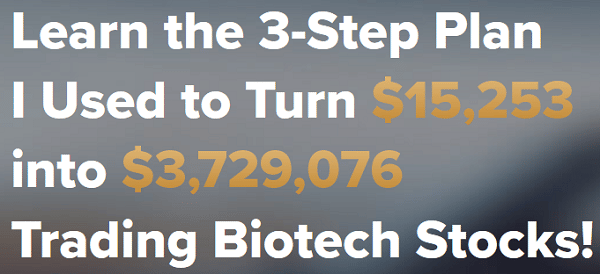It’s been a sloppy start to October… as geopolitical tensions steal headlines from an already jam-packed news-driven market.
There’s so much noise right now that it’s been hard to find great setups and follow through… even seasoned traders are finding it difficult.
Now is not the time to force your trading or try to do too much.
And as tempting as it is to react to the news headlines and try to trade them… sitting on your hands is probably the most sound advice you’ll hear.
There are several other actions you can take too—they include focusing on risk management, and targeting favorable risk-to-reward setups.
Table of Contents
Proper risk management is the key to longevity
Sure, making money is the goal when you’re trading stocks. However, when you focus on it all the time… it could land you in all sorts of trouble.
The key to proper risk management is taking risks you’re comfortable with.
For example, one of the first questions I ask myself when I’m about to throw on a trade is: Will I get mad if I lose all of my investment?
If my answer is no… then I can place the trade.
Basically, there should be a specific amount you’re willing to lose on any given trade or on any given day.
In other words, having a risk limit will help to prevent you from losing too much and damaging your account.
Have that number in mind, or even write it on a post-it note and stick it on your screen… so that it’s staring at you every day, holding you accountable and reminding you that you can’t lose more than X dollars in a trade or day.
Remember that not every trade is going to your way, so always make sure to have a limit so you don’t blow your account up.
— RECOMMENDED —
Experienced Biotech stock investor, Kyle Dennis, will be showing you 3 easy-to-follow steps that you’re going to want in your playbook & he’s got the numbers to prove it!
Diversify Your Trades
One common thing that I see all the time is beginner traders throw all their money into one trade.
They push all their chips in, thinking a trade is a lock… only for it to blow up in their face as they try to piece together their account and figure out what went wrong.
The first rule of trading and investing is diversification — not putting all your chips into one basket.
Whenever you’re in a situation where you’re sitting in losses and wondering whether you should buy more to get a better average… think to yourself will you get mad if you lose all your investment.
Instead of dollar-cost averaging a losing position, the better idea would be to look for other moneymaking opportunities so you can diversify some of the risks away.
Basically, if you have a losing position, you can net that out and end up on top, if you add another trade into the mix.
Some ways to diversify your risk include:
- Using multiple strategies that are not related to each other
- Trading different industries
- Having trades on both sides of the market (bullish and bearish trades)
- Trading asset classes that don’t move with the market
Focus on risk-reward
One of the most important concepts to understand is risk-reward.
It’s simply the number of risk units you’re willing to risk in relation to how much you’re willing to make. For example, let’s say you’re willing to risk 50% to make 100% (or more) — your risk-reward ratio is 1-2 (or higher).
If you’re willing to risk $1,000 to make $3,000 — your risk-reward ratio is 1-3.
Pretty easy right?
The whole idea is to look for setups where there is high-reward and low risk. A good rule of thumb is to take trades with a risk-reward ratio of at least 1-2.
That means even if you bat 50%… you’ll break even.
However, if the win rate is higher… say 70% or more… then you’ll be well in the green when you take trades with a risk-reward ratio of 1-2.
For example, if you take 10 trades and risk $500 on each trade (and make around $1,000 on each trade)… then you would be up $6,500 on those 10 trades ( 7 * $1,000 – 3 * $500).
Pretty straight forward right?
Risk management doesn’t have to be as difficult as all the Wall Street firms make it… you can use these simple concepts to your advantage to navigate through this volatile market.
However, if you want a strategy that doesn’t require a whole lot of risk management, check out Dollar Ace, and why it may be the perfect strategy for any market environment.
[Ed.note: Kyle Dennis runs BiotechBreakouts.com. He is an event-based trader, who prefers low-priced and small-cap biotech stocks.Source: BiotechBreakouts.com | Original Link
